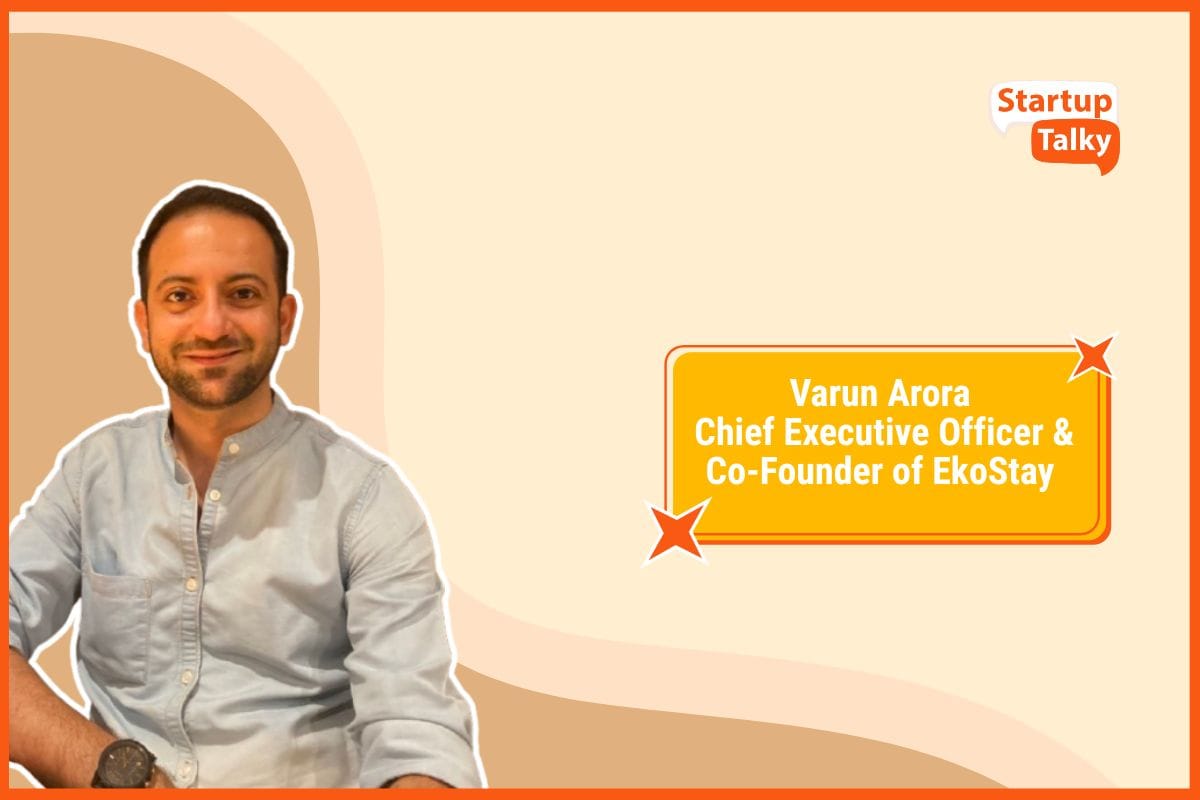Multilevel Marketing and Direct Selling in India - How does it Work and Is It an Illegal Ponzi Scheme? (Case Study)
🔍Insights
The initiation of every Ponzi scheme starts with a promise of unusual and supernatural returns. We all know that there are no ‘get rich quick schemes, they are a hoax. If you see or hear about these schemes, you should quickly assume that every quick rich scheme is someone else getting rich from (off) your money. Even then too, people fall for these tricks.
You too must have somewhere or sometimes must have seen these, a friend or a relative coaxing you to follow a trend in marketing, direct selling or some network marketing thing. You must have heard about these, but never thought too seriously about them, now is the time. This is the article about the same unsaid industry, we will find meanings, laws and eventually reveal how they operate. Read on to find if these are real or a mere Ponzi scheme?
What is Direct selling?
Multi-Level Marketing - Connecting networks
Difference Between Multilevel marketing and Direct selling
Do Multilevel marketing Companies Make Money?
Business Model behind Multi-level marketing
Selling Dreams of Financial Independence
Structure of a Multi-level marketing Company
Pyramid Scheme - The illegal scheme
Direct Selling - India Reports
Differences between Direct Selling and Pyramid Schemes
Direct Selling Rules and Guidelines 2021
Conditions required for every Direct Selling entity (Guidelines 2021)
Quick Points to Remember (according to the Direct selling rules 2021)
FAQ
What is Direct selling?
Direct selling is a type of distribution channel used by global brands and not just that, it is used by small and medium-sized brands too. It is a retail channel that they use for that matter.
Small companies and even entrepreneurial companies use this method to market the product that they have to offer to the general public. As the name suggests, it is direct and strictly consumer focussed. Direct selling enables all types of goods and services, that includes expensive jewellery and low selling products like cookware, everyday used cosmetics, items used in a. Houses like housewares, energy and insurance supplements and more and more. Tupperware is a great example of one of the leading direct selling companies in India.

The direct selling channel avoids all the middlemen in between a product selling cycle. The model is to offer a broad retail channel in a slight differentiating way. It is not only about getting a great value-adding product and getting it in the hands of a consumer, but more than that.
This model of business is primarily sold with the hope of business minds people will take on this venture. Every Indian who is entrepreneurial in his thinking capacity takes up this work of direct selling, it is a form of a low startup with low overhead costs. Thus, this business model while eliminating the middleman helps the business-minded person take on and build his/her own venture of selling and building business.
Having said that, we can claim that these people who work under this umbrella and ubiquitous sort of academy work on their own. They not only work with their time, but they also affiliate it with the company that uses the personal channel, this retains the freedom to run the business on their own terms.
This opportunity of running their own business is often regarded as the most lucrative opportunity that makes people get into the Direct Selling business. Thus, the main or the focus point of direct selling is the affiliate income that one can generate from the parent company. The purpose or goal of volunteers or joiners is only one and singular in nature.
The purpose or goal above all the work is to forge personal relationships with prospective customers. Anyone can be a prospective customer if he/she fulfils the need or want of the product or the designation, whatever the executive finds easy off.

Consultants have to build and forge relationships with clients/customers mainly through face to face discussions and demonstrations. In this time when social media is predominant in quite every field and the walls between industries are defusing, it is easy to go with.
For people at this age, direct selling is an easy market shift and a go-to strategy for marketing their products and generating customers with networking. This method is more looked at as a better and effective way of selling than that of traditional marketing of advertisements or securing shelf space.
Speaking of direct selling, it is quite famous in foreign and abroad countries. In India, the concept is relatively new than that of abroad. When we discuss direct selling, MLM is just the other round of it. The full form for MLM is Multi-level marketing, we should discuss it at this point to make it count on our path of learning about new marketing and distribution channels.
Multi-Level Marketing - Connecting networks
This might seem a new term to many but it is not new at all. Although the concept of direct selling and multi-level marketing is still in the early stages of growth, the concept is widely accepted and has a lot of users in India (The second most populous country in the world). If any of the concepts find a place here, it will most probably generate huge returns.
The term Multi-level marketing refers to a strategy that is operated and equipped by some companies. By some companies, we mean companies that dominantly are direct sales companies, in the field of any product or service.
Difference Between Multilevel marketing and Direct selling
MLM and direct selling may seem the same but there are some differences that are key to the definitions and working of both models. In a multi-level marketing strategy, the existing members try to promote and sell the products that the parent company offers to other individuals. Not only this selling aspect, but it also has the faculty to bring in and add on new recruits to the business.
The head is known as the distributor and is responsible for adding members and networks. The distributors are paid some percentage of the sales that their recruits (newly added) people make. These new recruits make and become what we call the distributor’s network or down team. These recruits are encouraged and motivated to make sales and as an outcome of those sales, earn money.
Multi-level marketing is a legal thing but there is one aspect that is added to it and is illegal by its nature. The illegal aspect is known to the world as “pyramid schemes”.
Do Multilevel marketing Companies Make Money?
It is reported and there are many actual proofs to prove this, that companies operating with this strategy earn a handsome amount. Multi-level marketing companies often generate billions in annual profits. However, these profits that they earn accrue to the majority of the workforce (who are constituents).
Often referred to as MLM participants. Out of all the distribution made, only a little profit is shared with individuals who are at the top tier of the MLM pyramid scheme. The fact that only the top tier people earn a handsome amount then becomes a new strategy of marketing for itself.

These earnings by those at the top tier in leadership are advertised and marketed in seminars and conferences. This sort of emphasis on the earnings of a few top earners motivates the new joiners. This in turn creates an illusion of financial indolence and the financially successful nature of the job. These small amount of earners are the marketing face of the MLM company that helps in generating more workforce under the whole organisation.
This pyramid scheme of MLM marketing makes people win companies with wrong assumptions. More and more distributors join the scheme with unrealistic and abnormal returns in earning margins. These sorts of earnings in real reality are just theoretical and merely improbable.

Business Model behind Multi-level marketing
Multi-level marketing, as previously mentioned, holds few top individuals as evidence of how it can lead to success and great financial earnings. This top shining tier of the brand is not what the issue with the scheme is. The issue is about a whole new perspective and dimensional shift.
The multi-level business model depends on the failure of the majority who fails in this pursuit of financial independence. They either fail to earn even a little or worse, they inject their own money from their own pockets to join and even then fail to earn a little amount, forget the unnatural amount. This is the main locus point of the business model at any MLM based company.
Volunteers who inject their own money into MLM becomes the reason why these companies become big and earn big in numbers, out of the received money from people, the MLM corporation only shares a little sum with the top tier participants. Thus, to enable the whole multi-level marketing organisation to work, the largest or majority of participants must operate at loss.
Only when those at the lower level of hierarchy operate in loss, the uppermost level of the MLM pyramid can derive their abnormal earnings. Those earnings then are emphasised and overemphasised by the MLM company to all other new joiners and this encourages them to participate at a financial loss.
We can clearly see that MLM or multilevel marketing is just about selling empty dreams to people who are unaware. The hope of high returns and easy income leads people to fall for these Ponzi schemes. In fact, this method of selling empty dreams is the focal point of their business model. The whole organisation is built on selling fake and empty hopes that appear really shiny.
Selling Dreams of Financial Independence

The main and even the primary face of an MLM company is the sales pitch. The sales pitch is obviously not the products and services. The products or services that the multilevel marketing company offers are only to the edge, or are just a fake face that they wear.
The products or services are largely peripheral to the MLM marketing model. Rather than a valid and sensible sales pitch, the company offers free confidence to the participants. The goal of that hyped up confidence is the promises of fake promises.
They have all sorts of techniques that they use to lure young people into the pyramid scheme. They will lure people with hopes of a “luxury lifestyle” or a lifestyle that you deserve. The basic sales pitch is that of financial independence and that all your dreams will come true.
You get the designation of “Independent distributor” and everything seems so good. You are hyped up by fellow young entrepreneurs and people would call you a ‘business partner’. MLM marketing companies don’t just sell you the idea of some financial and monetary benefits, they do more than that. MLM companies sell you dreams, that is what is known to us as “Selling the dream” in the real world.
We now know that Multi-level marketing people lure you to join by showing proof of income of the topmost tier level of the pyramid. One should not take that emphasised earning amount as a basis of hope for the same future earning prospects.
Structure of a Multi-level marketing Company
We looked at the business model of multi-level marketing, now let us see that in action. An MLM company mostly operates with the same structures as the business models.
Once a person is recruited in the scheme, by hook or by crook, they are given a designation of independent non-salaried participants. They can be known as many names, it can be associates, business owners, agents and whatever more that builds confidence.
Once they are boarded, they are authorised to distribute products or services that the company makes. Once they start selling the products and get some revenue from the company, they get some share of the income generated by the sales. It is here to note that they are just rewarded their share of the immediate retail profit from the customer and not downlines. The compensation paid is through a predefined compensation plan that is based on the products sold with the volunteer's own efforts.
After this simple transaction, business owners or those independent distributors try to develop their organisations by either building an active consumer network, who buy directly from the company or they recruit newcomers. This starts a new chain of independent distributors who also build their network base. This expands the whole organisation at the overall level.
This is the basic structure of a multi-level marketing company.
Pyramid Scheme - The illegal scheme
A pyramid scheme is the formal name given to the same effect that we read up till now. A pyramid scheme is a scheme (and scam) that is based on a hierarchical setup of marketing networks. It is illegal by the way in every place of the world. The most famous pyramid scheme is nothing but a clean and clear Ponzi scheme.
Every new recruit who is recruited makes up the base of the structure and provides funding for the operations of these big scams. The funding that these innocent people provide become the abnormal return that the top tier of executives gets.
A pyramid scheme usually does not include selling off anything or any product or even service. It is based on the inflow of cash by new entrants, it is based on these additional investors that want to earn abnormal returns. Those are the very people who lose up the invested money to the people who are at the top of the pyramid. This means that multilevel marketing schemes are not classified as pyramid schemes and are not necessarily fraudulent if a product is being sold at the place.

Direct Selling - India Reports
In India, there was a lot of scope for direct selling by business people. The reason is the fact that India is an immensely populous country. Moreover, here the average age is about 28 years, which is relatively younger than even most of the developed countries. Here we will discuss a report about the Annual Survey of India’s direct selling industry in 2011-12.

“At a time when most businesses faced a downturn, direct selling has recorded a significant increase in gross sales in back-to-back quarters of the current fiscal,” said IDSA chairperson Rini Sanyal
A new report by industry body Indian Direct Sellers Association (IDSA) said the sector saw 53 lakh, new entrants of direct sellers and consumers, in the first six months of the present financial year. Let us discuss some statistics for the Indian Direct selling, it is here to be noted that these reports are from the latest published survey of yr 18-19.
The Indian Direct Selling Industry stood at around INR 1,30,800 million in 2018-19 growing at approximately 13% from INR 1,16,700 million in 2017-18. The industry showed a Compounded Annual Growth Rate of approximately 16% growing from INR 83,085 million in 2015-16 to INR 1,30,800 million in 2018-19. Amway continues to be the leading Direct Selling organisation with global revenue of USD 8.8 billion in 2018. Avon Products IncHerbalife, Infinitus and Vorwerk along with Amway comprise the top 5 Direct Selling organisations in 2018 based on their global revenue.

The straight-line graph is simply the CAGR that the India Direct Selling Industry provided in the following years. CAGR here means compound annual growth rate, The Indian direct selling industry produced a cagr returns of about 16 percent. 16 percent is even greater than what most equities offer (About 12-14 percent is given by equities). This growth even surpasses the equities market in India. We can see why this is a growing investment area for investors.
The total sales of the Direct Selling Industry in India grew to INR 1,30,800 million (INR 13,080 crores) in 2018-19 from INR 1,16,700 million (INR 11,670 crores) in 2017-18 registering a ~13% year-on-year growth in the sales. The Direct Selling Industry showed a CAGR of ~16% from 2015-16 to 2018- 19. These figures include the sales of 21 members of the Indian Direct Selling Association (IDSA) and the non-member Direct Selling entities.

The share of IDSA members in the total sales of the Direct Selling Industry in India stands at approximately 60% as compared to the 40% share of non-members in 2018-19. Wellness products (which include products such as weight management supplements, meal replacement bars & drinks etc.) contribute more than half of the Indian Direct Selling Sales by IDSA members.
This is followed by cosmetics and personal care (which include products such as cosmetics, skincare, fragrances etc.) which contributes more than one-fourth of the sales by IDSA members during 2018-19. The Indian Direct Selling Industry’s contribution to the exchequer stood at around INR 2,500 crores in 2018-19. The number of active direct sellers (i.e. those who have ordered at least once in the last 3 months) in the country was around 5.7 million growing at ~6% from 5.4 million in 2017-18.
We can see that wellness products are the most used and directly sold products. However, the government did something related to this big industry in India.
The Government of India has banned companies from pyramid and money circulation schemes. The government brought out new rules and regulations for such a type of business marketing model, these are strict and needed to be followed. It is forecasted that these new rules will separate some entities, like that of Amway, Tupperware and Oriflame from operators that are likely to be called Ponzi in nature and feature.
According to the new rules, Direct sellers must have at least one physical location as their registered office within the country. They moreover, have to make a public declaration that they are not involved in any pyramid scheme or any sort of money circulation scheme as per the Consumer Protection (Direct selling) Rules 2021, notified by the Ministry of Consumer Affairs, Food and Public Distribution.
The first noted pyramid scheme was coaxed by Charles Ponzi (Italian-American) in 1919. He founded the Securities Exchange Company that year with the promise to investors of doubling their money in about 90 days. As this scheme continued to attract new puppets, he used that money to pay the earliest investors to double their investment. As the company came to light, Ponzi was bringing in $1 million a week.
Direct Selling Rules and Guidelines 2021
The Ministry of Consumer Affairs, Food and Public Distribution, and the Department of Consumer Affairs have made strict and clear rules for direct selling, Multi-level marketing and pyramid schemes in India.
They have struck guidelines that have to be followed by every company that tries to include direct selling as a mode of their product distribution. Here in the article, we will get to know what are these rules and guidelines that companies have to follow in order to directly sell their products,
These guidelines may be called the Direct Selling Guidelines 2021. These are issued as guiding principles for State Governments to consider regulating the business of Direct Selling and Multi-Level Marketing (MLM) and strengthen the existing regulatory mechanism on Direct Selling and MLM, for preventing fraud and protecting the legitimate rights and interests of consumers.

Conditions required for every Direct Selling entity (Guidelines 2021)
These Rules shall apply to all goods and services bought or sold through direct selling, all models of direct selling, all direct selling entities offering goods and services to consumers in India, all forms of unfair trade practises across all models of direct selling and also to a direct selling entity which is not established in India but offers goods or services to consumers in India.
Existing direct selling entities need to comply with these rules within 90 days from the date of publication of these rules in the Official Gazette.
The direct sellers, as well as the direct selling entities using e-commerce platforms for sale, shall comply with the requirements of the Consumer Protection (e-Commerce) Rules, 2020.
Direct selling entities and direct sellers are prohibited from:
- Promoting a Pyramid Scheme or enrol any person to such scheme or participate in such arrangement in any manner whatsoever in the garb of doing direct selling business;
- Participate in money circulation schemes in the garb of doing direct selling business.
- Rules provide for Monitoring by State Government.–– For ensuring compliance with these rules by direct selling entities and direct sellers, every State Government sets up a mechanism to monitor or supervise the activities of direct sellers and direct selling entities.
The Rules provide for certain obligations upon Direct Selling Entities which inter alia include:-
- Incorporation under the Companies Act, 2013 or if a partnership firm, be registered under the Partnership Act, 1932, or if a limited liability partnership, be registered under the Limited Liability Partnership Act, 2008;
- Should Have a minimum of one physical location as its registered office within India.
- Make self-declaration to the effect that Direct Selling Entity has complied with the provisions of the Direct Selling rules and is not involved in any Pyramid Scheme or money circulation scheme;
- Have a prior written contract with its direct sellers in order to authorise them to sell or offer to sell its goods or services, and the terms of such agreement shall be just, fair and equitable;
- Ensure that all its direct sellers have verified identities and physical addresses and issue identity cards and documents only to such direct sellers;
- Create adequate safeguards to ensure that goods and services offered by its direct sellers conform to applicable laws;
- Be liable for the grievances arising out of the sale of goods or services by its direct sellers.
- Every direct selling entity to provide the following information on its website in a clear and accessible manner
- Registered name of the direct selling entity; registered address of the direct selling entity and of its branches; contact details, including email address, fax, landline and mobile numbers of its customer care and grievance redressal officers;
- A ticket number for each complaint lodged through which the complainant can track the status of the complaint;
- Information relating to return, refund, exchange, warranty and guarantee, delivery and shipment, modes of payment, grievance redressal mechanism and such other information which may be required by the consumers to make informed decisions;
- Information on available payment methods, the security of those payment methods, the fees or charges payable by users, the procedure to cancel regular payments under those methods, charge-back options, if any, and the contact information of the relevant payment service provider;
- The total price of any goods or service in a single figure, along with its break-up price showing all compulsory and voluntary charges, including delivery charges, postage and handling charges, conveyance charges and the applicable tax;
- Provide correct and complete information at the pre-purchase stage to enable buyers to make informed purchase decisions, No direct selling entity shall adopt any unfair trade practice in the course of its business or otherwise and shall abide by the requirements specified in any law for the time being in force.
- A direct selling entity and a direct seller shall not induce consumers to make a purchase based upon the representation that they can reduce or recover the price by referring prospective customers to the direct sellers for similar purchases.
Clause 8: Prohibition of Pyramid Scheme & Money Circulation Scheme
- No person or entity shall promote a Pyramid Scheme, as defined in Clause 1(11) or enrol any person to such scheme or participate in such arrangement in any manner whatsoever in the garb of doing Direct Selling business.
- No person or entity will participate in the Money Circulation Scheme, as defined in Clause 1(12) in the garb of Direct Selling of Business Opportunities.
Quick Points to Remember (according to the Direct selling rules 2021)
- Both Direct sellers, as well as the direct selling entities using e-commerce platforms for sale, shall comply with the requirements of the Consumer Protection (e-Commerce) Rules, 2020.
- Both Direct selling entities and direct sellers are prohibited from promoting the Pyramid Scheme or money circulation scheme.
- State Government to set up a mechanism to monitor or supervise the activities of direct sellers and direct selling entities.
- Well laid down duties and obligations for both direct selling entities and direct sellers to safeguard the interests of consumers.
- Direct selling entities are to be liable for the grievances arising out of the sale of goods or services by their direct sellers.

Conclusion
It is quite clear and evident till now that pyramid schemes are illegal and they are banned specifically in ‘clause 8’ of the Direct Selling Guidelines 2016 and then in the updated versions of the Direct selling guidelines 2021. We can clearly see that our ministry of consumer affairs has clearly shut the case for “Multi-level marketing” and any sort of money circulation schemes.
The reason behind this is that these schemes are based on hopes of supernatural profits. In real life, there is nothing as easy as money. Innocent people who volunteer who fall for these types of schemes are misguided into investing their hard-earned money and they lose even that. It is to be noted that the latest guidelines (for direct sellers) were released on the 28th of December 2021, this article is based on those press releases.
Watching all the issues that ‘Pyramid schemes’ brings to the table, it has been banned and prohibited by the law. But we all know that clever people always find loopholes and then continue to run these schemes of direct selling and money circulation.
Most of these clever executives follow a pyramid scheme in the name of “Selling a product”, which is just a mask to protect the real predator. The products are super cheap and are of no use, these products are just used to legalise the otherwise illegal business of pyramid schemes. It is a loophole and we alert our readers not to fall for these “Get rich quick” schemes.
FAQ
Why is MLM bad?
Many people who join MLM in the hope of getting rich quickly end up losing all the money they invested and leaves them in debt.
What is an MLM example?
MLM is a business model where companies recruit sales representatives to sell their products who work full- or part-time. Tupperware is an example of MLM.
What is the biggest MLM company?
Amway is one of the biggest MLM companies with a revenue of 8 billion dollars as of 2019.
Must have tools for startups - Recommended by StartupTalky
- Convert Visitors into Leads- SeizeLead
- Website Builder SquareSpace
- Manage your business Smoothly Google Business Suite






